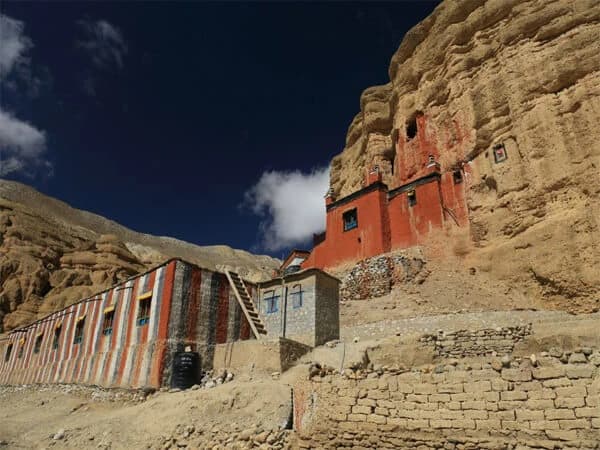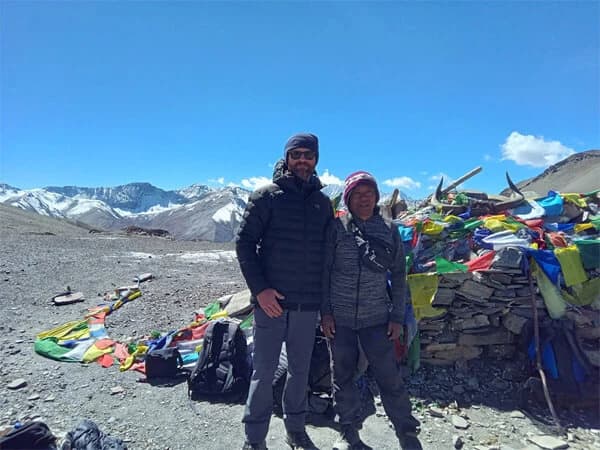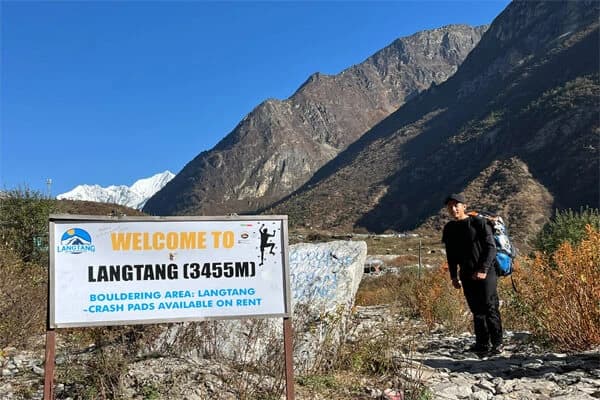Himalaya Cultural trekking is a unique approach to discover the locals while trekking in mountains. It is more than just seeing snow-capped peaks and walking along lovely paths. You travel through small villages where people have lived the same way for many generations. You get to know friendly people, see their traditional homes, and observe how they cultivate, prepare, and celebrate holidays. You might enjoy local dances, listen to folktales, or have tea with a family. The journey turns into an opportunity to meet individuals and learn about their culture.
Nepal Trekking of this type allows you to share in the culture and the natural world. Along with soaking in the stunning Himalayan vistas, you learn about the customs, values, and past of the people who live in these mountains. On the route, there is something new to discover and enjoy every day.
The unique communities and customs and the sacred locations and regional celebrations contribute to the quality of this journey. We shall examine the beauty and significance of Himalayan cultural trekking in this blog. It serves as a guide for tourists seeking a closer relationship with the heart of the Himalayas rather than merely adventure.
The Essence of Cultural Trekking
The Himalayas cultural trekking entails more than merely walking along picturesque paths. It is a journey into the soul of the inhabitants of these mountains. You learn about history, customs, and daily living in isolated communities while taking in the breathtaking scenery and clean air. Trekking of this kind enhances and enriches the experience by fostering connections with both environment and culture.
Walking Through Traditional Villages
Walking through historic villages that have maintained their way of life for hundreds of years is one of the most enjoyable aspects of cultural trekking. Often constructed of wood and stone, the homes have exquisitely carved doors and windows. It is possible to witness people spinning wool, carrying baskets, or working in their fields. Every hamlet has a distinct construction, farming, and clothing style that reveals information about its ethnic heritage and history.
Meeting Local People
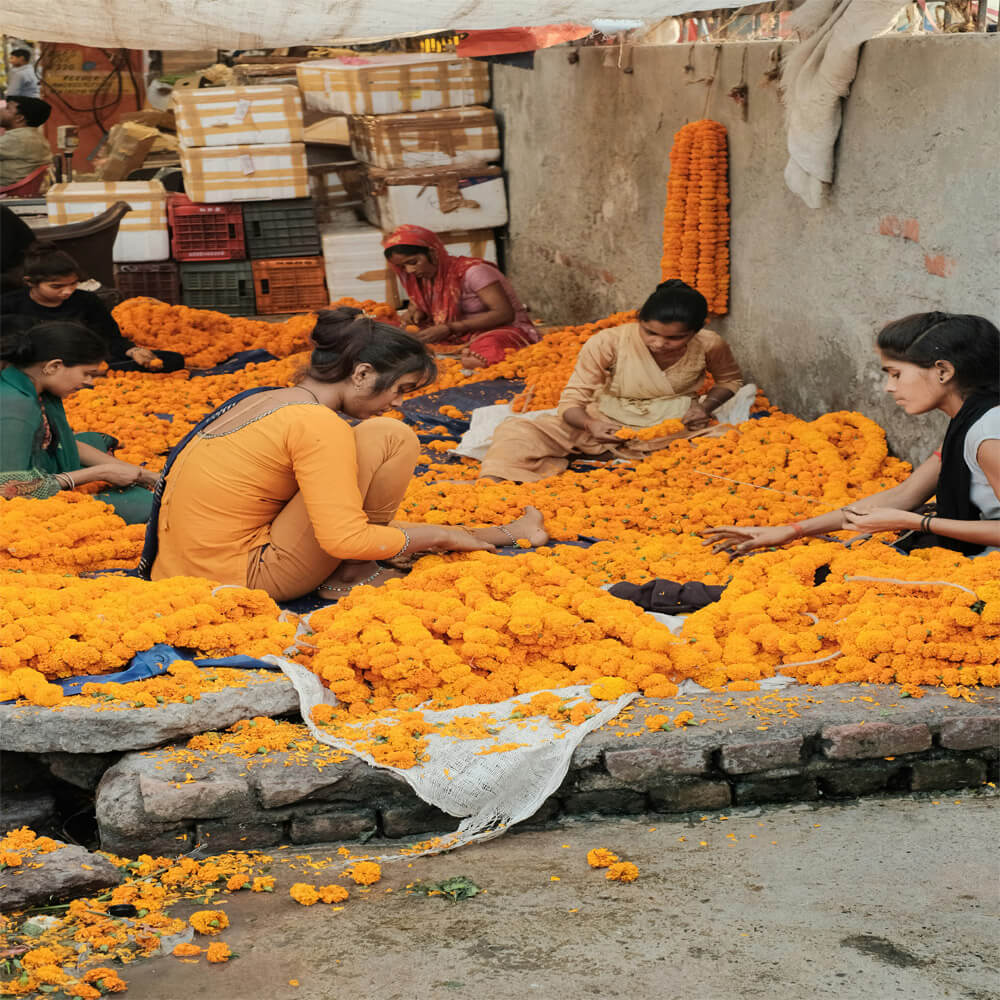
You get the opportunity to interact with the locals directly through cultural trekking in Nepal. Many will give you a friendly "Namaste" and a warm grin. They might offer you to join them for tea or a small supper. You can learn a great deal about their lives, aspirations, and customs by simply speaking with them and using a few common terms. These little things frequently turn into the trip's most treasured recollections.
Staying in Homestays and Teahouses
Cultural trekking frequently involves lodging in tiny, family-run teahouses or local homes, in contrast to camping trips. The encounter becomes more personal as a result. You share in the family's meals, listen to their tales, and occasionally even participate in their nighttime dances or singing. Because the money you spend during a homestay goes directly to the community, it is also a chance to help the local economy.
Blending Scenery and Culture
Cultural trekking is unique because it combines the beauty of the natural world with the diversity of human existence. You can be sitting in a village courtyard listening to elders narrate stories to youngsters one day, and the next you might be walking through woodlands brimming with rhododendron flowers. Through the locals, you are experiencing the pulse of the Himalayas in addition to simply seeing them.
Unique Cultural Highlights Along the Trails
You encounter the heart and spirit of the locals when you go on a Himalaya cultural trekking tour, in addition to seeing mountains and valleys. The voyage turns into an exploration into century-old customs, festivals, and artistic expressions. These are a few of the most stunning cultural landmarks you can see when traveling.
Local Festivals and Celebrations
The opportunity to observe local festivals is among the most thrilling aspects of Himalaya cultural trekking. These celebrations are vibrant, happy, and vibrant. You may see the Mani Rimdu festival trek in the Everest region, when monks bless people and perform masked dances. You could participate in harvest festivals or New Year's celebrations in the Annapurna or Langtang regions. These occasions frequently feature dancing, music, and large community get-togethers where people laugh and eat together. By participating, even as a courteous visitor, you can see the Himalayas from the perspective of those who live there.
Traditional Music, Dance, and Storytelling
Evenings in villages frequently come to life with traditional performances during Himalaya cultural trekking. Folk instruments like the sarangi (string instrument) and madal (drum) may be played. Villagers occasionally get together to recite folk tunes or share tales about the mountains, gods, and their ancestors. While some dances are quick and exuberant, others are quiet and elegant. You will feel linked to the feelings and expressions even if you do not comprehend the language.
Clothing, Handicrafts, and Local Art Forms
Seeing the exquisite handicrafts and apparel created by the locals is another gem of Himalayan cultural trekking. It is possible to witness women knitting vibrant hats and gloves or weaving wool into cozy blanket. In some places, craftspeople paint intricate religious artwork known as thangka or carve wood into exquisite furniture. Traditional attire, such the Tamang dress or the Sherpa chuba, symbolizes the necessity for warmth in the frigid highlands as well as cultural pride. In addition to providing you with a unique memento, purchasing these handcrafted goods straight from the producers supports neighborhood families.
Himalaya cultural trekking transforms into a gateway to a vibrant culture through festivals, music, and art, going beyond a simple mountain trek. Every smile you see has a backstory, and every village has its own customs. Your Himalayan journey is genuinely unforgettable because of these memories that linger in your heart long after the trek is over.
Connection With Himalayan Spirituality
People frequently picture lofty, snow-capped mountains and clean air when they think of the Himalayas. However, many people also hold strong spiritual traditions and beliefs in these highlands. You can discover this side of the Himalayas, where religion, culture, and everyday life are intertwined, by going on a Himalaya cultural journey. There are monasteries, temples, and other places of worship along the routes that are integral to the locals' identity.
Monasteries and Temples Along the Trails
You will come across several Buddhist monasteries, Hindu temples, and little shrines while walking over the Himalayas. Built in picturesque settings, frequently on hilltops or next to rivers, some of these are hundreds of years old. Monasteries are hubs of community life in addition to being places of worship. Locals gather there for blessings, and monks live, worship, and study there. You can have a better understanding of how religion influences mountain dwellers' life by visiting these locations on your trek.
Religious Rituals and Daily Practices
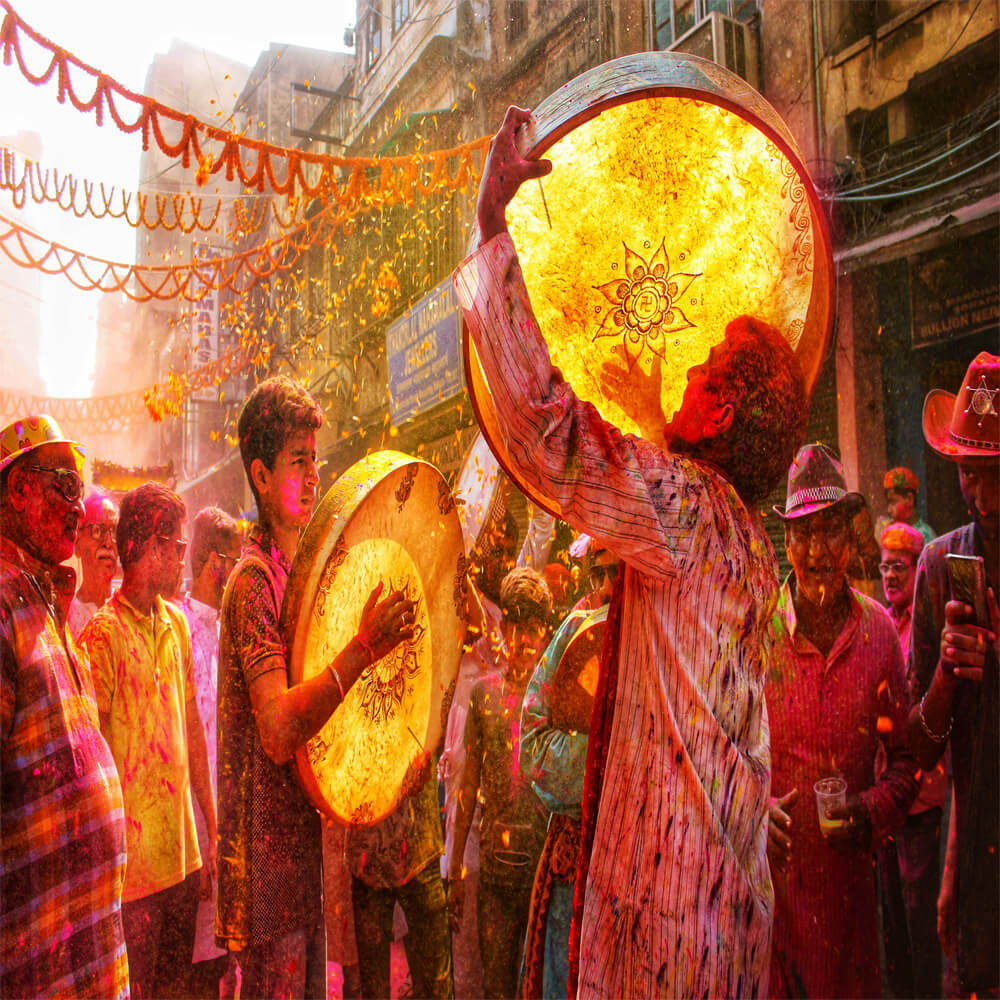
Observing the locals go about their everyday spiritual practices is a unique aspect of Himalaya cultural trekking. You may see people distributing food and flowers at temples, prayer flags flapping in the breeze, or prayer wheels spinning at village gateways. These small deeds demonstrate reverence for the gods, ancestors, and the natural world. In tiny ways, such as walking clockwise around a stupa or spinning a prayer wheel, trekkers are frequently encouraged to participate, as long as they do so with respect.
Legends and Sacred Stories of the Mountains
Myths and tales passed down through the ages abound in the Himalayas. You may hear stories of ancient conflicts between good and evil, lakes made by holy people, or gods who reside in the mountains when walking across the Himalayas. In addition to providing amusement, these tales provide moral lessons and clarify the significance of particular locations. The sensation is considerably more potent when you listen to them while standing in the center of the mountains.
Himalaya cultural Hiking includes more than just traveling by foot. It is about observing how spirituality affects daily life in the mountains and experiencing the bond between faith and nature. Whether you are listening to an elder narrate a mountain legend, watching monks chant in a monastery, or joining villagers in prayer, you are not only observing, you are becoming a part of a centuries-old tradition. Cultural trekking in the Himalayas is so distinctive and fascinating because of this spiritual experience.
Famous Cultural Trekking Routes
The Himalayas are renowned for their rich culture and customs in addition to their towering mountains and breathtaking scenery. Trekking through the Himalayas allows visitors to get up close and personal with both culture and nature. You may explore traditional villages, interact with locals, and discover their way of life along several walking paths. The following are a few of the most well-known Himalayan cultural trekking routes:
Everest Region – Sherpa Culture
The Sherpa people, renowned for their mountaineering prowess and friendly demeanor, reside in the Everest region. Trekkers travel through settlements including Tengboche, Khumjung, and Namche Bazaar. You can observe traditional festivals, visit Buddhist monasteries, and witness vibrant prayer flags. The Sherpa people have a strong connection to the mountains, and you will hear tales of Everest and its climbers while on your journey.
Annapurna Region – Gurung and Magar Heritage
There is a mix of Gurung and Magar communities in the Annapurna region, together with stunning landscape. Experience local cuisine, watch traditional dances, and stay in homestays in villages like Ghandruk and Ghorepani. To find out more about the Gurung people's history and traditions, visit the Gurung Museum in Ghandruk. This route is a favorite among those who enjoy Himalaya cultural trekking since it blends rich cultural experiences with mountain scenery.
Langtang Valley – Tamang Traditions
The Tamang people live in the Langtang Valley near Kathmandu. Trekkers can visit monasteries, pass through stone-built towns, and take advantage of natural hot springs along this section of the Tamang Heritage Trail. The language, religious customs, and attire of the Tamang people all bear a strong Tibetan influence.
Upper Mustang – Tibetan-Inspired Culture
It feels like entering a another universe when you enter Upper Mustang, a restricted territory. Its culture is strongly related to Tibet, with old monasteries, cave homes, and distinctive festivals like Tiji. The locals continue to engage in traditional agricultural and trading methods, and the landscapes are spectacular and arid.
Lower and Upper Dolpo – Remote Mountain Life and Bon Religion
Lower Dolpo offers a blend of ancient Buddhist culture and wild nature. Trekkers can see Shey Phoksundo Lake, historic monasteries, and isolated communities where not much has changed in centuries. Travelers can enjoy a more tranquil cultural trekking experience in this less congested area.
Whether you decided trek to Everest, Annapurna, Langtang, Mustang, or Dolpo, Himalaya cultural trekking allows you to experience some of the world's most breathtaking paths while fostering a close relationship with the local way of life. The trip is instructive and inspirational because each route has its own tales, celebrations, and lifestyles.
Benefits of Cultural Trekking
There is more to Himalaya cultural trekking than simply traversing mountains. It has numerous advantages that contribute to the journey's outstanding quality. These are the primary benefits of selecting a Himalayan cultural trekking trip.
Learn About Local Life
Learning about the indigenous way of life is one of the main advantages of Himalaya cultural trekking. You may observe how people live, work, and rejoice as you walk through villages. You can observe children attending school, ladies weaving traditional garments, and farmers working in the fields. Through this encounter, visitors can better comprehend the struggles and day-to-day lives of mountain people. You develop a stronger bond with the area when you interact with locals and hear their stories.
Support Local Communities
Additionally, Himalaya cultural trek benefits nearby villages. Trekkers help the local economy by visiting small businesses, purchasing local food, and lodging in teahouses or homestays. Many villages rely on tourism as a source of revenue. Every trekker who opts for cultural trekking contributes to the preservation of customs while helping individuals make a life. Responsible travel of this kind inspires localities to preserve their ecology and culture for future generations.
Experience Unique Traditions
You can explore distinctive customs through cultural trekking that are not available in urban areas. You may attend a festival, watch traditional dances, or listen to elders in the area narrate old tales. Many villages have unique traditions for religious rites, weddings, and harvests. Trekking across the Himalayas offers you the opportunity to see these events in their natural environment.
Connect With Himalayan Spirituality
Many communities in the Himalayas have strong spiritual links. You can see temples, monasteries, and other holy places while on a cultural tour. You might take part in regional customs, observe monks praying, or discover more about Hindu and Buddhist customs. This spiritual bond gives the journey a deeper meaning. Walking through mountains that have been considered sacred for ages can help visitors feel inspired, quiet, and introspective.
Personal Growth and Learning
Himalaya cultural trekking is a path toward self-improvement. Walking in isolated places, getting to know individuals from diverse backgrounds, and witnessing their tenacity instills patience, understanding, and respect. You get to sample different meals, adjust to new surroundings, and interact with locals in basic ways. This opens your eyes to the beauty of cultural diversity while boosting your self-esteem and fostering a spirit of adventure.
Enjoy Nature and Culture Together
Lastly, cultural trekking allows you to simultaneously experience environment and culture. You explore villages, traditional homes, and local markets while taking in breathtaking vistas of the mountains, rivers, and forests. Compared to ordinary trekking, this combination makes Himalayan cultural trekking a singular experience. Understanding the country and its inhabitants is just as important as achieving a peak.
Trekking across the Himalayas is a journey that ties you to people, mountains, and traditions; it is more than just physical activity. Learning about local life, giving back to the community, experiencing customs, developing oneself, and sharing in nature and culture are some advantages.
Tips for a Respectful Cultural Trekking Experience
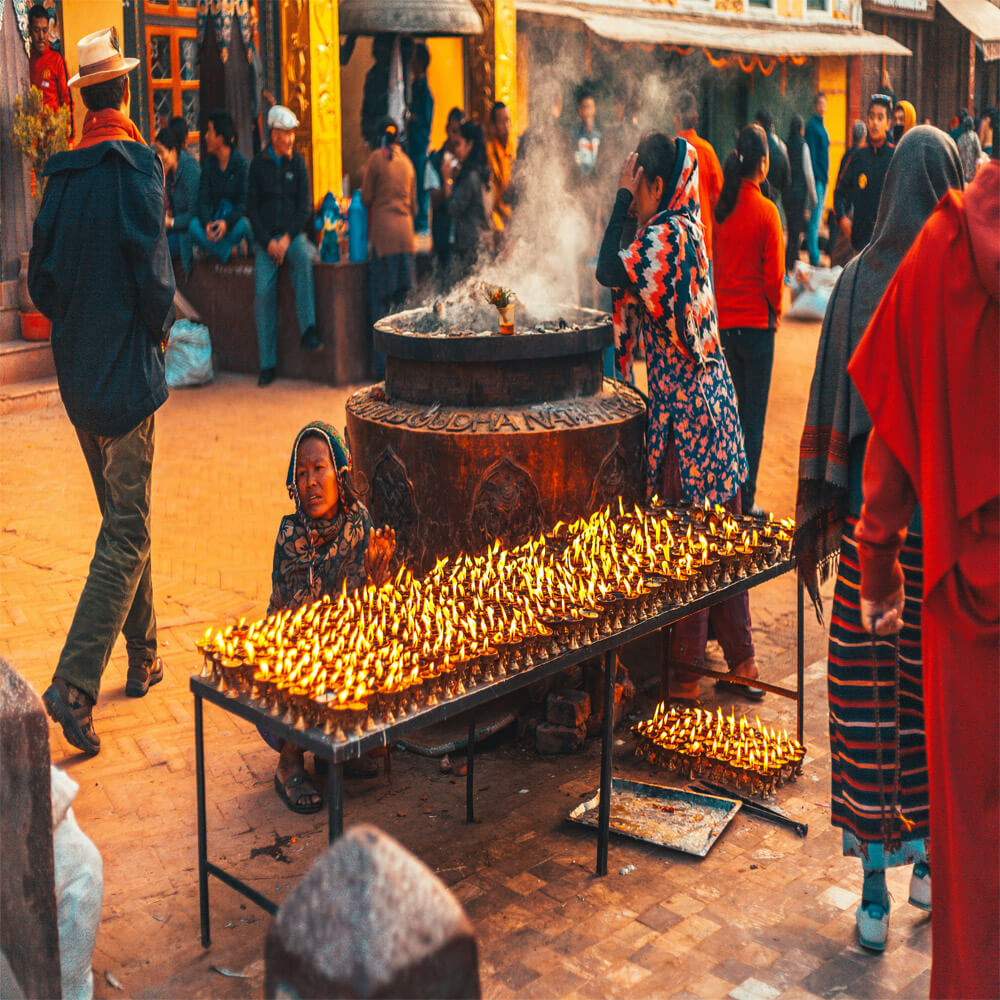
It is crucial to keep in mind that you are traveling to local villages in the Himalayas, each of which has its unique customs, beliefs, and lifestyle. Being respectful helps support the locals and enhances the enjoyment and significance of your trip.
Learn a couple simple local expressions first. Simple salutations like "Namaste" or "Thank you" foster a welcoming environment and demonstrate respect. People are appreciative when visitors try to speak their language.
Second, wear modest clothing. The conservative nature of many Himalayan villages makes it easier to fit in and prevent discomfort by dressing appropriately. Particularly when visiting monasteries, temples, or other places of worship, stay away from shorts and skimpy attire.
Third, get permission before snapping pictures. Particularly in private settings or during religious rituals, some people can object to having their photos taken. Always ask nicely, and pay attention to their response.
Fourth, engage in customs with caution. When invited to participate in a holiday, dinner, or ceremony, observe beforehand and abide by local customs. Showing respect can be as simple as taking off your shoes before entering a house or monastery.
Fifth, pay attention to how you affect the environment. Stay on trails, refrain from littering, and encourage environmentally responsible behavior. To cut down on trash, bring reusable bags and bottles.
Lastly, help out the local businesses. Purchasing handicrafts, dining at neighborhood teahouses, and employing tour guides are all ways that tourism directly benefits local communities.
By using these suggestions, you can contribute to the preservation of the Himalayas' customs and scenic beauty in addition to having a more deep cultural experience. On your journey, a polite behavior can lead to lifelong friendships, education, and treasured memories.
Why Choose Nepal Trekking Routes for Himalaya Cultural Trekking
Nepal Trekking Routes is a reputable company that makes Himalayan cultural Hiking simple, secure, and unforgettable. We have years of expertise planning treks in isolated parts of the Himalayas, so we are well-versed in the local communities, villages, and paths. This knowledge guarantees that visitors will enjoy the stunning scenery and vibrant culture as they go.
Our knowledgeable advisors are a big plus. They help trekkers interact with villages and comprehend cultural practices because they are familiar in the local languages, customs, and traditions. For people of various ages and fitness levels, the guides also offer safety assistance, acclimatization guidance, and suggestions for making the trek pleasurable.
Convenience and comfort are also priorities for Nepal Trekking Routes. We manage meals, permits, and transportation, set up good teahouses or homestays, and offer porters or luggage assistance. This frees trekkers from worrying about logistics so they may concentrate on experiencing the culture.
Additionally, we encourage responsible travel. Visitors make a positive impact on the area by acknowledging local companies and communities. Your Himalayan cultural trek will be genuinely unforgettable if you choose our company. We guarantee a well organized, culturally immersed experience that blends adventure, education, and safety.
Conclusion: Himalaya Cultural Trekking
Cultural trekking in the Himalayas is more than just walking through mountains. It is a journey that lets you see how people live, work, and celebrate in remote villages. You can meet locals, visit monasteries, and enjoy traditional music, dances, and festivals. Every village has its own story, food, and way of life, giving trekkers a chance to understand the real Himalayan culture.
This type of trekking also helps local communities. By staying in teahouses or homestays, buying local crafts, and following customs respectfully, travelers support the people who live there. It teaches patience, respect, and curiosity about different lifestyles.
The experience is worthwhile despite the difficulty of the trails. You bring back memories of friendships, tales, and cultural teachings in addition to pictures of mountains. A Himalaya cultural trekking is a once-in-a-lifetime experience that immerses you in the local way of life and the natural world.
Some of Frequently Asked Question
What is cultural trekking in the Himalayas?
Cultural trekking combines walking through mountains with experiencing local life. You visit villages, meet local people, and learn about their traditions, festivals, and daily routines.
Which regions offer the best cultural trekking experiences?
Popular areas include the Everest region (Sherpa culture), Annapurna region (Gurung and Magar villages), and Langtang (Tamang traditions). Each region has unique customs, art, and festivals.
How physically challenging is a cultural trek?
Most cultural treks are moderate in difficulty. You walk several hours daily on hilly or mountainous trails. Basic fitness and preparation are recommended, but you can adjust your pace to enjoy local villages.
How can I respect local culture during the trek?
Learn simple local phrases, dress modestly, ask permission before taking photos, and follow local customs. Staying in teahouses or homestays helps support communities.
What makes cultural trekking different from regular trekking?
Besides stunning landscapes, cultural trekking focuses on human connections and traditions. It’s not just about mountains,it’s about stories, festivals, and learning how Himalayan communities live and thrive.





